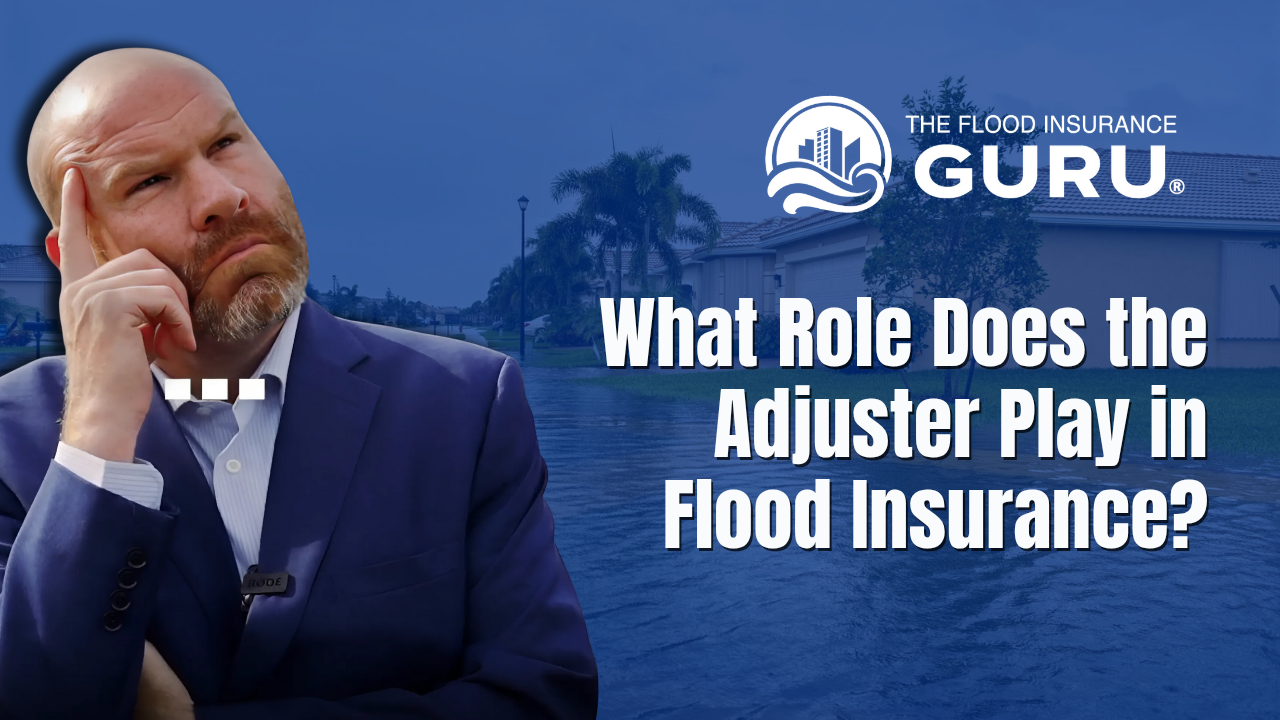How much can an insurance adjuster impact your investment recovery after a flood?
Are you prepared to navigate the most influential relationship in the flood insurance process?
Floods can devastate property and profits alike—but how you recover financially often hinges on one crucial person: the flood insurance adjuster. If you’re a real estate investor with holdings in flood-prone areas, understanding this figure isn’t optional—it’s essential.
In this guide, you’ll learn:
- How adjusters operate within the federal flood insurance system
- What qualifications, training, and responsibilities adjusters must meet
- The different types of adjusters—and how each affects your claims
- Common pitfalls in the claims process and how to avoid them
- Tactical strategies for working successfully with any adjuster
Whether you manage a handful of rentals or an expansive portfolio, this article equips you with the insider knowledge and tools to protect your investments when water threatens your returns
The Federal Flood Insurance Framework: Why It’s Different
Unlike other property insurance policies, flood insurance in the U.S. is dominated by the National Flood Insurance Program (NFIP), overseen by FEMA. This means adjusters work under strict federal regulations, standardized policy language, and national claims protocols—not state insurance laws.
Key Implications for Investors:
- Adjusters follow FEMA guidelines—not state-level oversight.
- Every adjuster must be NFIP-certified with a current Flood Control Number (FCN).
- NFIP adjusters often handle many claims at once during disasters—timing and attention vary.
With consistency comes constraint. While the federal model offers predictability, it may overlook local variables like regional building norms or unique property features, which can be critical to claim fairness for investors.
Qualifications: Not All Adjusters Are Created Equal
The NFIP has strict requirements for who can assess flood damage.
Adjusters are categorized by their specialization—residential, manufactured, commercial, or condominium—and must have years of relevant experience. For example:
- Residential Adjusters: 4+ years in property loss adjusting, capped at $250,000 per claim.
- Commercial Adjusters: 5+ years handling large-loss properties, capable of estimating $500,000+ claims.
Advanced Training Includes:
- NFIP Certification Workshops
- FAST (Flood Adjuster Specialized Training) courses
- Annual continuing education to maintain FCN credentials
For complex properties, confirm your adjuster’s specific qualifications. Always request their FCN card—this ensures they’re active and authorized for NFIP claims.
Types of Flood Insurance Adjusters: Who’s Handling Your Claim?
The type of adjuster can dramatically affect the speed and success of your settlement.
1. Staff Adjusters (WYO companies):
Employees of private insurers authorized to administer NFIP policies. They typically follow company-specific processes alongside federal rules.
2. Independent Adjusters:
Freelancers contracted during high claim periods. Many specialize in flood claims and offer regional or technical expertise, which is valuable for high-value or complex properties.
3. NFIP Direct Adjusters:
Hired directly by FEMA. These adjusters work exclusively under federal procedures and often step in during large-scale disasters.
4. Public Adjusters:
Represent you, not the insurance company. Typically used when disputes arise, especially on large or complex losses. They charge contingency fees (usually 10–20%).
5. Catastrophe (CAT) Adjusters:
Deployed during major events. Fast responders, but may offer less individualized attention due to sheer claim volume.
Understanding who you’re dealing with can help set expectations and shape your communication strategy.
1. Staff Adjusters (WYO companies):
Employees of private insurers authorized to administer NFIP policies. They typically follow company-specific processes alongside federal rules.
2. Independent Adjusters:
Freelancers contracted during high claim periods. Many specialize in flood claims and offer regional or technical expertise, which is valuable for high-value or complex properties.
3. NFIP Direct Adjusters:
Hired directly by FEMA. These adjusters work exclusively under federal procedures and often step in during large-scale disasters.
4. Public Adjusters:
Represent you, not the insurance company. Typically used when disputes arise, especially on large or complex losses. They charge contingency fees (usually 10–20%).
5. Catastrophe (CAT) Adjusters:
Deployed during major events. Fast responders, but may offer less individualized attention due to sheer claim volume.
Understanding who you’re dealing with can help set expectations and shape your communication strategy.
Step-by-Step: What Flood Adjusters Do
Flood adjusters do more than walk around your property with a clipboard. Their responsibilities span five major phases:
1. Initial Contact & Claim Setup
Within days of claim submission, adjusters verify coverage, explain procedures, and discuss emergency advances.
2. Property Inspection
This is the make-or-break moment. Adjusters measure high-water marks, assess structural and personal property damage, and differentiate flood damage from pre-existing issues.
3. Investigation & Verification
They confirm the event qualifies as a covered flood, review policy limits, and cross-check against other coverage or disaster aid.
4. Documentation & Reporting
Expect detailed estimates, damage photos, and the all-important Proof of Loss form—due within 60 days.
5. Communication & Coordination
Adjusters liaise with policyholders, supervisors, contractors, and sometimes engineers to manage resolution.
Be proactive: support their work with your own documentation and keep communications professional and organized.
Flood adjusters do more than walk around your property with a clipboard. Their responsibilities span five major phases:
1. Initial Contact & Claim Setup
Within days of claim submission, adjusters verify coverage, explain procedures, and discuss emergency advances.
2. Property Inspection
This is the make-or-break moment. Adjusters measure high-water marks, assess structural and personal property damage, and differentiate flood damage from pre-existing issues.
3. Investigation & Verification
They confirm the event qualifies as a covered flood, review policy limits, and cross-check against other coverage or disaster aid.
4. Documentation & Reporting
Expect detailed estimates, damage photos, and the all-important Proof of Loss form—due within 60 days.
5. Communication & Coordination
Adjusters liaise with policyholders, supervisors, contractors, and sometimes engineers to manage resolution.
Be proactive: support their work with your own documentation and keep communications professional and organized
Common Disputes—and How to Navigate Them
Even experienced investors can find themselves at odds with adjusters. Here are the most frequent friction points:
Even experienced investors can find themselves at odds with adjusters. Here are the most frequent friction points:
1. Causation Conflicts: Is it flood damage or wind damage? Structural shifting or water pressure? These debates often determine coverage eligibility.
2. Coverage Interpretation: Basements, detached structures, and building contents are common gray areas. Misclassifications can drastically reduce payouts.
3. Valuation Gaps: Standardized estimating tools may underrepresent local labor/materials or ignore code upgrade costs.
4. Insufficient Documentation: Without pre-loss photos, receipts, or accurate water line evidence, your claim could be discounted or denied.
5. Procedural Issues: Missed deadlines—especially the 60-day Proof of Loss—can invalidate otherwise valid claims.
Resolution Strategy:
- Start with clear communication and documentation.
- Escalate to supervisors if needed.
- Bring in public adjusters or attorneys for high-value disputes.
- Use FEMA’s formal appeal process when internal solutions fail.
Is it flood damage or wind damage? Structural shifting or water pressure? These debates often determine coverage eligibility.
Working Smart: Pro Strategies for Real Estate Investors
Want a smoother, faster, higher-value flood claim experience?
Here’s how to maximize your position before, during, and after a flood:
Before the Flood:
- Maintain updated, cloud-stored property photos and improvement records.
- Understand your policy’s specific coverages, limits, and exclusions.
- Build a network of restoration professionals for faster response.
During the Claims Process:
- Vet your adjuster (ask for FCN card).
- Provide an itemized damage list and photos during inspection.
- Follow up in writing after every call or meeting.
If You Own Multiple Properties:
- Track each claim separately—but look for inconsistencies between adjusters.
- Use favorable decisions on one property as leverage for others.
For Commercial & Rental Properties:
- Document tenant leases, rental losses, and business interruptions.
- Flag code upgrade requirements early—these are often disputed.
Financial Tips:
- Coordinate with your mortgage company on release of claim checks.
- Plan for delays—have emergency capital or lines of credit available.
Conclusion: Positioning Yourself for Better Outcomes
At the end of the day, flood claims are rarely just about water—they’re about timelines, cash flow, and whether your investment rebounds or stagnates. And in that equation, the adjuster plays a leading role.
You came here to understand what adjusters actually do and how to work with them—not against them. Now that you’re equipped with the knowledge to navigate flood claims confidently, your next move is clear: make sure your policy can actually protect you the way you expect it to.
Your next step: Schedule a free flood insurance policy review. We’ll walk through your current coverage, flag any gaps or red flags, and help you prepare for the next storm—before it hits.
At the end of the day, flood claims are rarely just about water—they’re about timelines, cash flow, and whether your investment rebounds or stagnates. And in that equation, the adjuster plays a leading role.
You came here to understand what adjusters actually do and how to work with them—not against them. Now that you’re equipped with the knowledge to navigate flood claims confidently, your next move is clear: make sure your policy can actually protect you the way you expect it to.
Your next step: Schedule a free flood insurance policy review. We’ll walk through your current coverage, flag any gaps or red flags, and help you prepare for the next storm—before it hits.
At the end of the day, flood claims are rarely just about water—they’re about timelines, cash flow, and whether your investment rebounds or stagnates. And in that equation, the adjuster plays a leading role.
You came here to understand what adjusters actually do and how to work with them—not against them. Now that you’re equipped with the knowledge to navigate flood claims confidently, your next move is clear: make sure your policy can actually protect you the way you expect it to.
Your next step: Schedule a free flood insurance policy review. We’ll walk through your current coverage, flag any gaps or red flags, and help you prepare for the next storm—before it hits.
At the end of the day, flood claims are rarely just about water—they’re about timelines, cash flow, and whether your investment rebounds or stagnates. And in that equation, the adjuster plays a leading role.
You came here to understand what adjusters actually do and how to work with them—not against them. Now that you’re equipped with the knowledge to navigate flood claims confidently, your next move is clear: make sure your policy can actually protect you the way you expect it to.
Your next step: Schedule a free flood insurance policy review. We’ll walk through your current coverage, flag any gaps or red flags, and help you prepare for the next storm—before it hits.
At the end of the day, flood claims are rarely just about water—they’re about timelines, cash flow, and whether your investment rebounds or stagnates. And in that equation, the adjuster plays a leading role.
You came here to understand what adjusters actually do and how to work with them—not against them. Now that you’re equipped with the knowledge to navigate flood claims confidently, your next move is clear: make sure your policy can actually protect you the way you expect it to.
Your next step: Schedule a free flood insurance policy review. We’ll walk through your current coverage, flag any gaps or red flags, and help you prepare for the next storm—before it hits.



